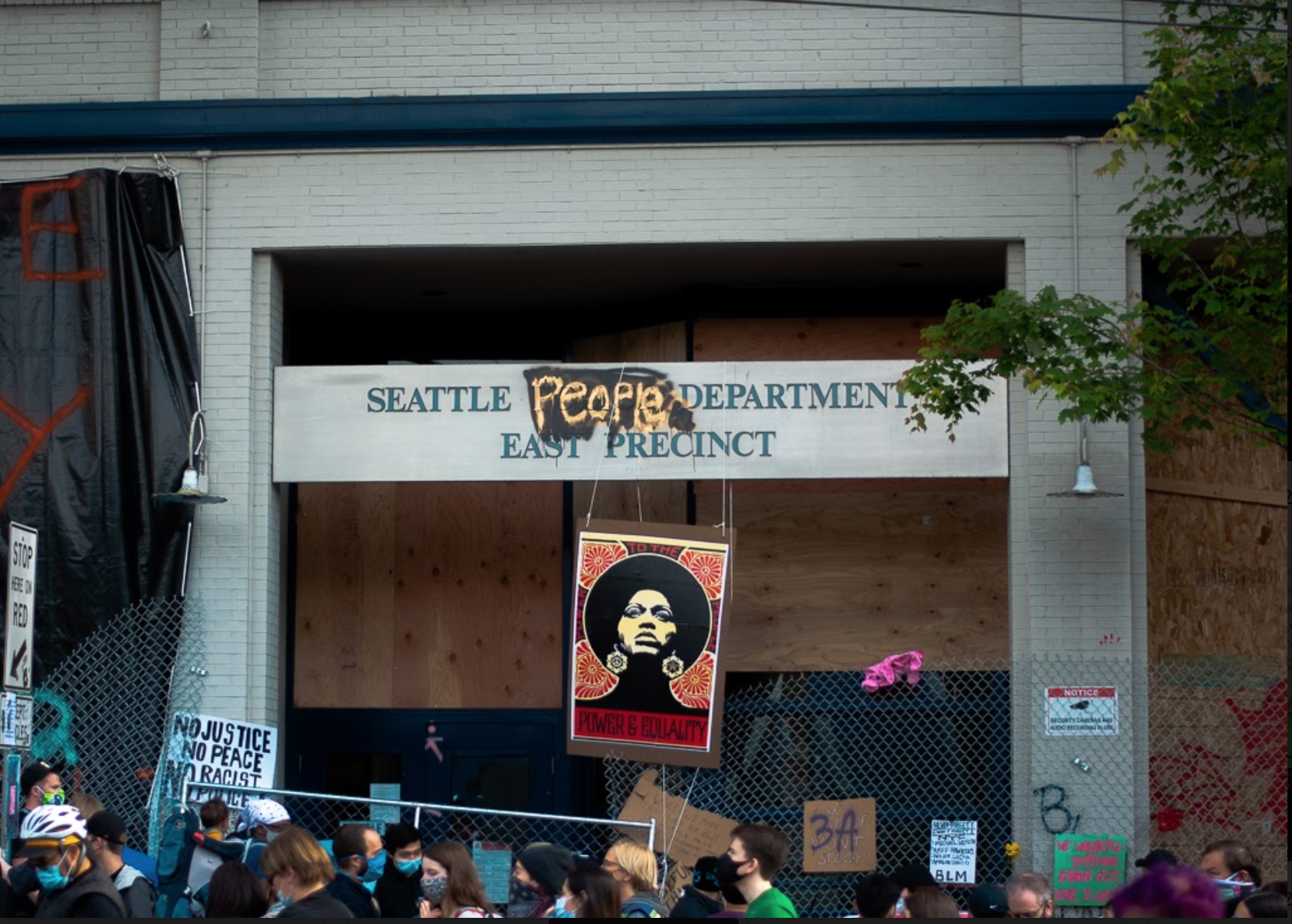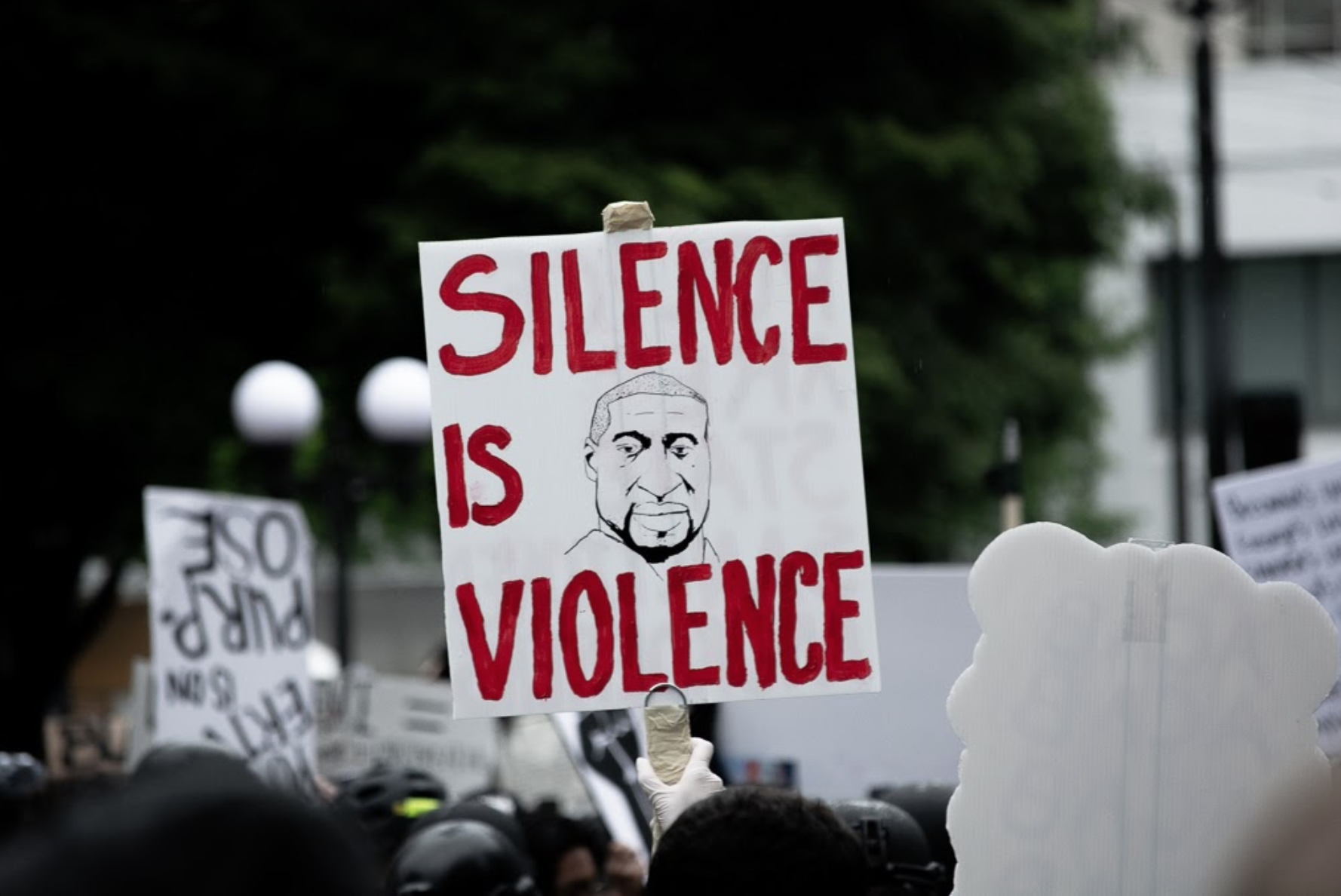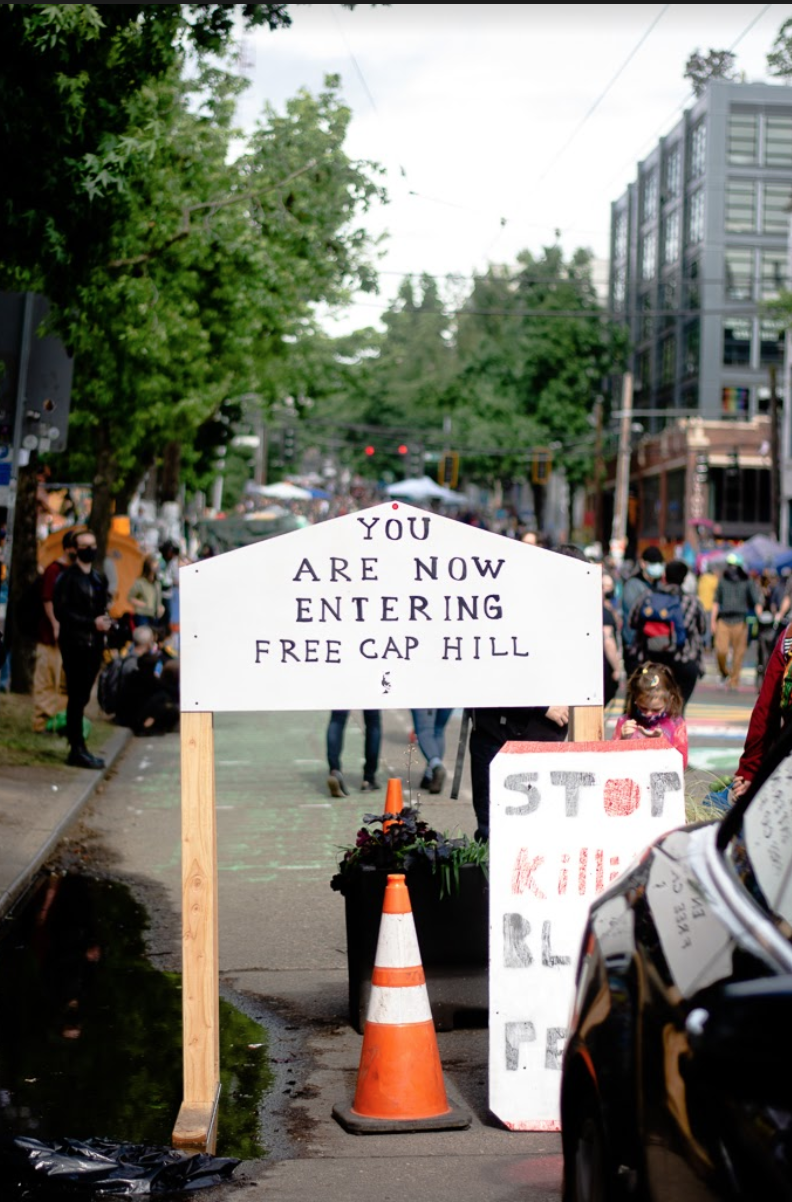The state of Seattle, Washington, amid BLM








The Seattle Police Department’s East Precinct after being abandoned and taken over by protestors. Photos by SAM ANDRUS Photo Editor
My experience protesting as part of the Black Lives Matter movement took place in downtown Seattle, Washington, where protestors gathered at the Westlake Center shopping mall. It was raining lightly when my friend Julia and I arrived. The first thing we saw was a mass of protestors encircling a battalion of fully armored riot cops with plexiglass shields and face masks. Within five minutes of entering the crowd, we witnessed a middle-aged man yelling in a police officer’s face, only for him to be pepper sprayed until he was on the ground. Then, a loud flash bang was thrown into the crowd and people began to run.
We sprinted while feeling the peppery gas burn in our noses and mouths … There were several times throughout the protest when we were forced to run from tear gas, flash bangs, pepper balls and ammunition that sounded like bullets. The sky turned darker as rain began to pour relentlessly until our masks were soaked and clinging to our faces, making it even harder to breathe. A billow of smoke diffused out from behind buildings, reaching up toward the sky – it was black.
As we got closer, we could see the cause of the smoke: there in my line of vision were two police cars. With windows smashed in, flames engulfed the vehicles, reaching as high as the second story windows of the buildings they were adjacent to. An enforced curfew for 5:10 p.m. was soon set in place by Mayor Jenny Durkan, and Julia and I received the emergency text alert at 5:00 p.m. Let me repeat that – a curfew was set to apply in 10 minutes from its original delivery, with approximately 10,000 people still roaming the streets.
When I got back to my home and talked to my parents, I realized that the silence of my suburban house was so odd to me. There were no longer any screams, explosions or bullet sounds bombarding my ears. There was quiet.
About a week later, my friend Ellis and I were on Capitol Hill in Seattle, standing at a police barricade on 11th Ave. and Pine St. The barricade was erected 11 days prior to stop protestors from getting close to the Seattle Police Department’s (SPD) East Precinct. On the other side of the barricade were rows of police officers, with shields, face masks and batons. Every member of the police force wore their badges, but their names and numbers were covered by black electrical tape. Behind them were soldiers dressed in army camouflage, possessing long batons. Further behind them were the SWAT team and army vans that looked eerily similar to tanks.
We protested at the northern barricade for hours until we left to get food. Not even 10 minutes after we had walked out, I saw a horrifying sight on my other friend’s Snapchat story. Where Ellis and I had been standing not even an hour earlier, a black car belonging to one of the police officers’ brothers had driven through the crowd of protestors in an attempt to inflict injury, and the driver had shot a protestor. The driver then exited his vehicle, waved his gun around and calmly walked over the barricade to the police – who took their time to apprehend him. After that incident, Seattle Police Chief Carmen Best ordered the SPD to abandon the East Precinct and early the next morning, they left. Soon after, CHOP was born.
CHOP, also known as Capitol Hill Organized Protest, has multiple names – including the Capitol Hill Autonomous Zone (CHAZ) or merely Free Cap Hill. It was a police-free area of Capitol Hill that protestors took occupation from June 8 to July 1. During those 23 days, I visited the area nine times. Media reported the zone as a hostile area full of armed ANTIFA soldiers who were ID-ing people at the gates and hunting down white people. That couldn’t be further from the truth. There weren’t even any gates. It was a free and open space; there were no armed guards of any kind. The space was focused purely on community.
People gathered in large crowds to listen to those of all ethnicities, religions and cultures speak on their experiences and what the movement meant to them. People played basketball and painted murals. People manned tents where they would pass out food, water, medical supplies, as well as masks and hand sanitizer to protect from COVID-19. It was a beautiful scene full of passionate individuals.
A few weeks after CHOP was disbanded by the SPD, federal troops were introduced to Seattle. I went back to Capitol Hill for my eighth or ninth protest. I had learned from my previous experiences to bring goggles and tear gas solution and, as I had unfortunately expected, after a couple water bottles were thrown by protestors, SPD declared the protest a riot and began using tear gas, rubber bullets, fireworks, and flash bangs – despite a Seattle City Council ban on the use of gas and rubber bullets in effect. My friend and I held at least eight different people’s eyes open while helping to apply the solution. Tear gas stained their clothes and faces, as we ourselves were heavily coughing from the gas through our own masks and goggles.
It was a truly horrifying event to witness, and it became very clear that the police did not care whether or not they injured or even possibly killed someone. They were not there to protect and serve. But the fact that after all the violence and brutality that I and others just like me have witnessed – that we still stand on the front lines, eye-to-eye with men and women in full riot gear and armed with weapons – shows that they have failed. They have not scared us, and instead only fuel our resentment and passion for reform. The police almost resemble scared animals, backed into a corner, ready to lash out when they come into danger. And the police are in danger, not from the protestors, but from the change we seek to achieve.
